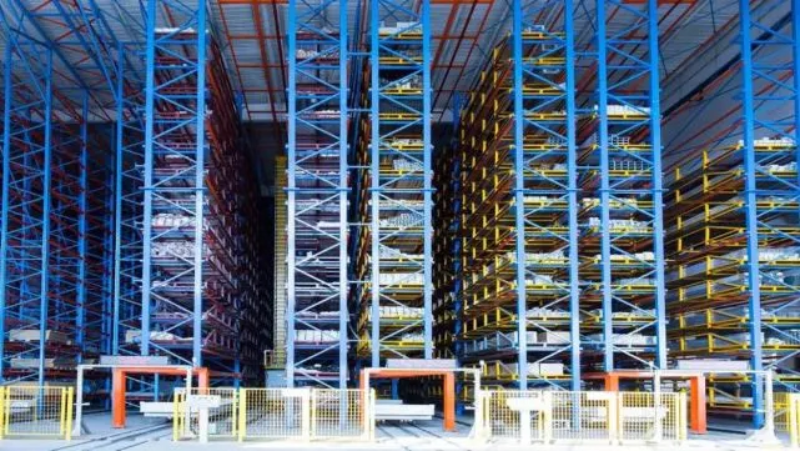The application of laser rangefinder in the positioning and distance measurement of three-dimensional storage logistics stackers -- JIOPTICS
The three-dimensional warehouse stacker adopts automated logistics warehousing equipment to achieve automated management of storage in the three-dimensional warehouse, achieving timely and automatic supply of cylinder core and empty trays for the conveyor line. At the same time, it achieves timely delivery of goods to the next workstation on the conveyor line. The control adopts manual and automatic forms, making it more flexible to handle abnormal problems during transportation.

The conveying system PLC of the three-dimensional warehouse stacker is connected to the laser rangefinder of the monitoring machine through a communication processor, receiving operation commands issued by the monitoring machine, and returning the execution status and system status of the commands. The electronic control system has the function of detecting faults and providing sound and light alarms for fault states, as well as eliminating sound and light alarms. The modular core storage silo is used to store grouped sand cores and empty pallets, playing a role in regulating the supply and demand balance of sand cores between the core making and molding departments.

operational principle
The stacker crane is driven horizontally by a walking motor through a drive shaft with a power wheel on the lower guide rail. The lifting motor drives the cargo platform through a steel wire rope for vertical lifting motion, and the forks on the cargo platform perform telescopic motion. Through the above three-dimensional motion, the goods in the designated cargo location can be taken out or sent into the designated cargo location.
The walking address reader and laser rangefinder are used to measure the horizontal walking position of the stacker crane. The lifting address reader is used to control the lifting position of the cargo platform. The direction of the fork is positioned using a proximity switch. By using optoelectronic equipment and laser ranging sensors for identification, as well as the conversion of optical communication signals, computer control can be achieved, as well as manual and semi-automatic control of the stacker control cabinet.
At the same time, an optimized speed regulation method is adopted to reduce the impact of deceleration and shutdown of the stacker, greatly shortening the buffer distance for starting and stopping the stacker, and improving the operational efficiency of the stacker.



